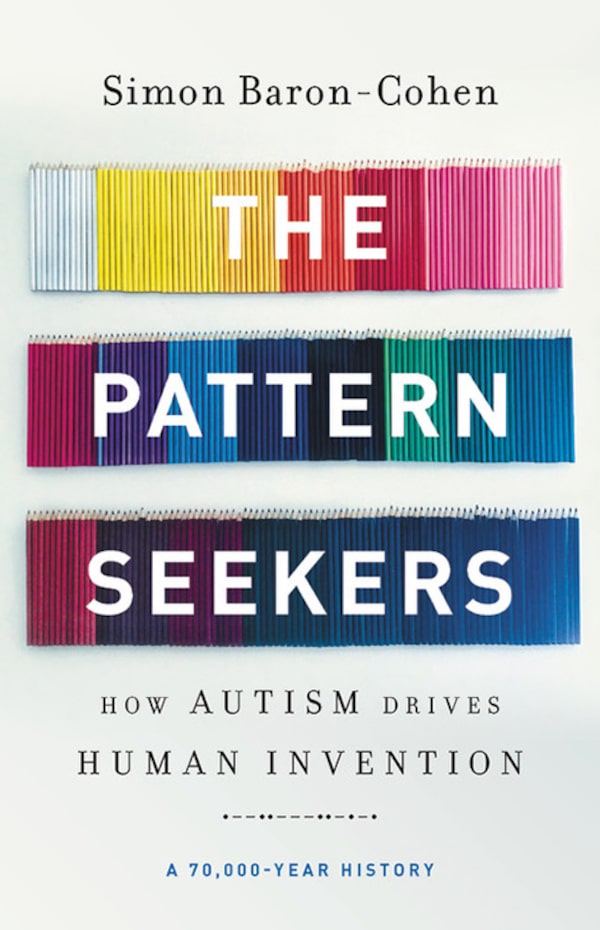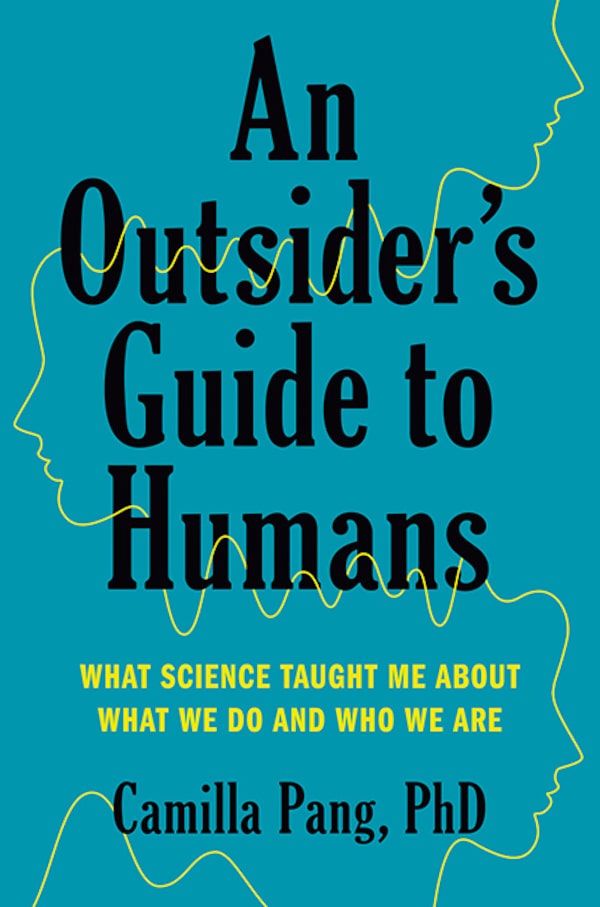Expand your mind and build your reading list with the Books newsletter. Sign up today.
A steady rise in autism cases over the past 20 years has brought with it a proliferation of books, movies and TV shows about autism or featuring autistic characters. Those on the spectrum are also increasingly writing about their experiences, giving neurotypicals – that is, those not on the autism spectrum – an important window into their lives. It’s also given further steam to the neurodiversity movement, which views autism not as a disorder, but simply as an alternative way of being in the world. Among the plethora of new books – hundreds were published in the past 12 months alone – here are three extremely worthwhile offerings by, or about, those with ASD.

Supplied
“The key was to behave normally,” Stephen Jackley told himself as he drove away from the Vermont gun store where he’d just been caught illegally attempting to buy a firearm. A tall order for anyone, given the adrenalin that would be coursing through one’s veins, but even more so for Jackley, who, though he intended to use the gun for criminal acts, was far from your typical criminal. He had no record, for one, and his motive wasn’t personal gain.
In his propulsive new book based on extensive interviews with Jackley, The Unusual Suspect, British journalist Ben Machell lays out how an unassuming university student with Asperger’s Syndrome embarked on a series of heists on the eve of the 2008 global financial crisis that eventually landed him in prisons in both the United States and Britain.
Growing up an only child, Jackley’s interests had leaned toward quantum theory, cosmology and the works of J.R.R. Tolkien. By his early 20s, however, he’d become obsessed with what he viewed as rigged capitalist system that, in addition to stacking the decks for the wealthy, was hurtling humanity toward ecological disaster. How people could possess such information and not urgently act on it was inconceivable to Jackley, and so his decision to plan and execute hold-ups at various banks and brokerages around England was, for him, a moral act. Styling himself as a latter-day Robin Hood, he would drop rolls of stolen cash (which he initialled “RH”), into the laps of the homeless. The rest was hidden in trees near his home, his plan being to acquire just enough to start an organization that would legally carry on the work of eradicating world poverty.
But as Machell notes, despite his obvious intelligence and systematic approach to the heists, Jackley could be strikingly naïve. He wore disguises so absurd that people pointed and laughed as he walked toward his targets. He assumed wrapping a blank-firing gun in aluminum foil would, er, foil airport metal detectors. Like many with ASD, he had difficulty lying (the exception being his alibis, which he viewed as essential). This transparency directly contributed to his precipitous downfall, in that it never occurred to Jackley to hide the diaries that laid out his crimes in painstaking detail amidst poetry, theories and other random thoughts. MAKE SURE YOU DO THE HEIST AND DO IT WELL, read one entry. He never hid the diaries because he never thought he’d get caught.
Although Machell mostly refrains from editorializing, his clear prose allowing Jackley’s astonishing story to do the heavy-lifting, he leaves us with little doubt that Jackley’s profound isolation played a major role in his poor decision-making and, ultimately, his fate. In addition to his Asperger’s, which went undiagnosed until he was in his 20s, both his parents suffered from severe mental illnesses and died before he was 30. Jackley essentially went through life without anyone having his back. He had virtually no friends, no teachers who meaningfully interceded on his behalf.
One of his story’s profoundest ironies is that, although Jackley was motivated by broad empathy for his fellow humans, he entirely failed to consider the traumatizing effect his hold-ups would have on those at the receiving end of them: in most cases, the same everyday working people he was trying to help. Such disconnects arise frequently in The Unusual Suspect. Once, after breaking into what he took to be the offices of a bank, Jackley trashed the place in frustration after finding no money. When he learned on the news the next day that the offices actually belonged to a charity, he was mortified. Shortly afterward, he sent a written apology and began sending anonymous instalments of (stolen) cash by way of compensation.
In one of his final interviews with Machell, Jackley showed up with a copy of Greta Thunberg’s book. Thunberg, another autistic person with concerns closely aligned with Jackley’s, has, of course, become a global sensation, and Machell, poignantly, can’t help speculating on how Jackley’s life might have turned out had he had the same advantages as Thunberg. Fateful too was a decision by Jackley’s lawyer’s not to disclose his Asperger’s during his U.K. trial, which might have resulted in a lighter sentencing (he was given 13 years, and released on parole in 2015, after serving six).

Supplied
That the careful research and observation that went into Jackley’s crimes were sometimes undermined by the stumbling block of empathy would come as no surprise to renowned autism researcher (and cousin to Borat comedian Sasha Baron-Cohen) Simon Baron-Cohen, whose latest book, The Pattern Seekers, looks at how exactly this divide in the human brain, and in the brains of people with autism, drives invention. According to Baron-Cohen, the ability to invent is directly tied to the evolutionary appearance, about 70,000 years ago, of the systematizing mechanism unique to Homo sapiens: the impulse, that is, to seek out patterns and to experiment with them. As countless YouTube videos have shown us, animals such as apes, crows, parrots and octopuses can learn, but they don’t experiment and thus can’t invent. For this, we should probably be thankful.
Key to Baron-Cohen’s argument is the fact that some of the genes associated with “hyper-systematizing” minds – such as those of Bill Gates, Carl Linnaeus or Thomas Edison – are also associated with autism. They’re also more commonly found in males. Indeed, some have posthumously diagnosed Edison, a brilliant inventor with zero people skills, as autistic (although Baron-Cohen warns, in general, against making these kinds of outsider diagnoses). To test his theory, Baron-Cohen looks to Silicon Valley and other parts of the world where specialists in the STEM subjects (science, technology, engineering, mathematics) tend to cluster, all of which, lo and behold, appear to have higher numbers of autistic people than the general population.
This has fascinating implications. If people on the spectrum are gravitating to these regions, where they are meeting and marrying others with ASD, then it seems reasonable to expect that rates of autism, which is genetic, will rise even further. One of Baron-Cohen’s most eye-opening statistics is that 8 per cent of America’s 330 richest families have a child on the spectrum, while in the general population it’s only 1 per cent to 2 per cent. He reasons that many of these people, such as Elon Musk (who does have a child with ASD), made their billions from their hyper-systematizing abilities. The sorry flip side to this is that, despite possessing skills and characteristics that would presumably make them valuable to many employers, such as attention to detail and a high level of dependability, the vast majority of people with autism are lamentably unemployed and underutilized.
One pattern-seeker breaking that mould is Camilla Pang, a British PhD in bioinformatics in her late 20s who was diagnosed with Asperger’s when she was eight (she also has ADHD and suffers from anxiety). Like most “Aspies,” Pang struggled socially as a child and was prone to meltdowns. Often, she felt as if she were from a different species or planet. It’s language one often hears from Aspies, including Jackley, who wrote about it in his diaries.

Supplied
Science would become Pang’s salvation and, eventually, her profession. In An Outsider’s Guide to Humans, which won the Royal Society Science Book Prize in Britain, she explains how science has given her a portal into humanity and into understanding the chaotic neurotypical world around her. But though ostensibly aimed at others on the spectrum (and at her younger self), Pang’s take on human behaviour and relationships is so unique, and so often beautiful, as to appeal to anyone. Filled with handwritten graphs and charts, and with chapter titles such as “How to embrace your weird: Biochemistry, friendship and the power of difference,” or “How to have empathy with others; Evolution, probability and relationships,” An Outsider’s Guide is how one imagines the result had Stephen Hawking, Pang’s childhood “heartthrob” (Jackley is a major fan, too), decided to dabble in self-help.
Many of Pang’s examples can be taken metaphorically, such as her description of how the idea behind computer algorithms helped her transition from being a “box thinker” who clings to the safe and reliable, to a “tree thinker” who embraces uncertainty. Or how the concept of refraction, where a prism separates colour into different wavelengths, has helped her control the “white light” of a panic attack by breaking fear into its constituent parts.
Others are more literal. Pang has, for example, applied ergodic theory, a mathematical accounting for chaos and randomness in dynamic systems over time (apparently), to help her overcome her fear of crowds. She uses Newton’s second law, similarly, to help her anticipate how people will move in space. When confronted with a new relationship, environment or job, Pang conscripts Bayes’ theorem, a branch of probability theory. Game theory and agent-based modelling have proved invaluable for parsing the complex world of etiquette and politeness. Pang is often charming and witty, but never more so than when she explains how the law of thermodynamics — everything tending toward disorder — accounts for her inability to keep her room clean, and why empathy for her mother is why she cleans it at all: “I was satisfying her sense of order over my own.”
Empathy is perhaps the most compelling throughline in all these books, if only because people on the spectrum like Pang and Jackley show how elastic it can be. In his book, Baron-Cohen lays out evidence suggesting that the human brain’s balance of empathy and systematization might be zero-sum; that is, the more you have of one, the less you have of the other. If that’s the case, then Pang is an outlier, having worked her way to empathy to the degree that it’s become like a “drug” for her: “For years,” she writes, “I yearned for human connection, to show that I am made from love, and that those like me – who are deemed by some to be crazy or abnormal – are actually some of the best, most non-judgmental people you will meet. I think of empathy as a painful euphoria, because it hurts like hell at times, but it is also something that no other feeling or experience can replicate.”